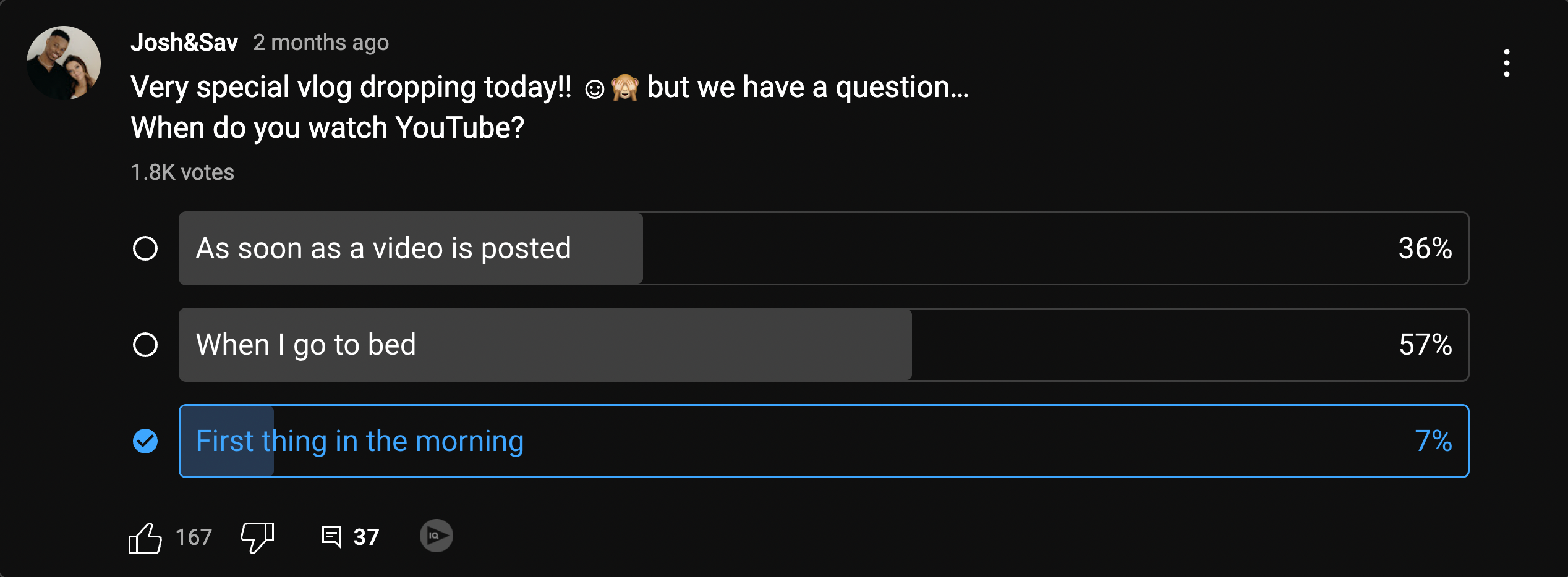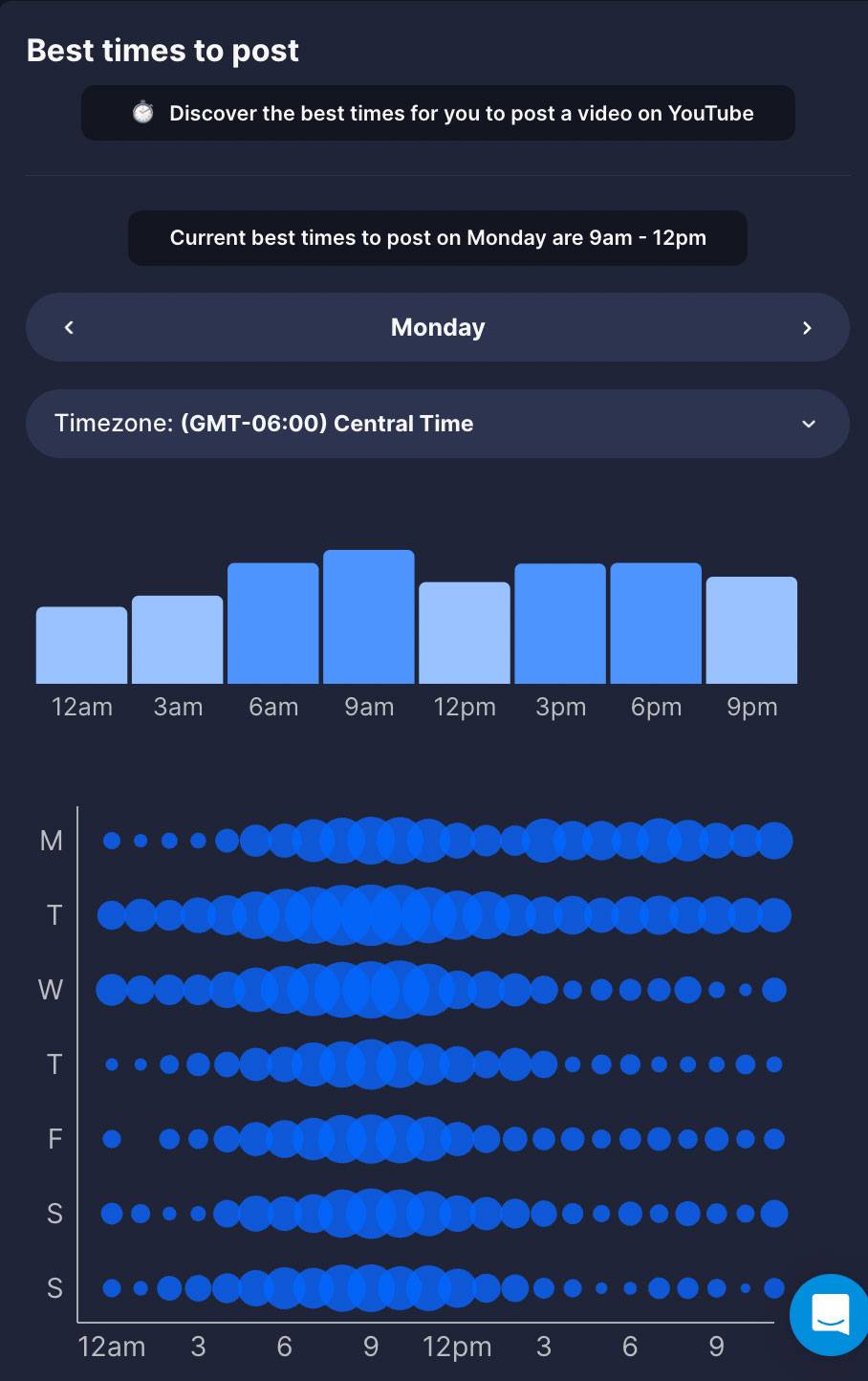Lydia Sweatt is a writer who loves balancing her article/blog time indoors with a healthy dose of nature. She bikes, hikes, and identifies edible plants along the way.
No More Scrambling: How to Craft a Foolproof YouTube Upload Schedule

When is the best time to post on YouTube? How many videos should I upload each week?
New creators tend to ask these questions at the start of their journey, but they're not alone in wanting to create the best upload schedule. Virtually every creator — from those just getting started to seasoned veterans — must reassess their workload at some point. It's a great way to balance viewers' expectations while ensuring you don't burn out on YouTube.
Want to find that sweet spot in your schedule? Here's how to build a content plan based on audience behavior and your own personal goals.
1. Let Your Viewers Choose the Best Dates and Times
Sometimes, the best way to determine what your viewers want is to ask them! Do they prefer to watch videos in the morning, evening, or as soon as they're posted? Would they rather watch your videos once a week or twice a week? Questions like these give you a basic understanding of your viewers' expectations and what a content schedule could look like.
As always, we recommend posting on the YouTube Community tab to learn more about your viewers. You can create a poll (or two) asking viewers to choose the dates and times they want to watch your content. In fact, lifestyle creators Josh&Sav have done this multiple times on their channel (shown below).
In the first poll, 92% of viewers said they would rather watch two videos throughout the week instead of two on Friday.

And the second poll indicates that most viewers watch videos at night. So instead of posting at noon or 4 p.m., Josh&Sav could experiment with publishing later in the day.

If you choose this method, remember that viewers' beliefs and actions don't always align. So while asking them what they would do is an excellent first step, try to back up those stories with data.
That brings us to the next tip…
2. Determine When Your Viewers Are Most Active
Want to know the best time to post on YouTube without second-guessing yourself? Check your audience analytics in the YouTube Studio. In this section of the site, you'll find a graph showing which days and times your viewers are on YouTube.
Here's how to navigate to the graph:
1. Go to the YouTube Studio and click Analytics in the left navigation bar.

2. Click the Audience tab.

3. Scroll down to the "When your viewers are on YouTube" section, then analyze the graph to see when your viewers are most active. The bright purple areas show increased activity.

Want to go even deeper? Instead of only knowing when your viewers are online, sign up for vidIQ's Pro Plan to see the days and times viewers watch your content. From there, it's easy to click through each day of the week and find the best time to post on YouTube.

3. Explore the 'Average Views Per Viewer' on Your Channel
Creating an upload schedule is tough when you aren't sure how many videos to post throughout the week. But don't worry: This is another piece of data you can pull from the YouTube Studio.
The specific metric you're looking for is average views per viewer, or AVPV for short. AVPV represents the number of videos each unique viewer watches on your channel. So if your AVPV is three, that means the average viewer watches three videos on your channel before clicking away.
Why is this important? If you know the number of videos people watch, you can build an upload schedule around that figure. So the first step is finding your AVPV with this handy guide.
After that, here's what to do as you build your schedule:
- If your AVPV is low (1 or less): Focus on improving the quality of your content, not posting more videos.
- If your AVPV is high (2 or higher): Experiment with posting more videos. If the quality of your content goes down, go back to your previous frequency. After all, you don't want your AVPV to drop because your videos aren't as desirable as before.
4. Think About Your Current Schedule and Energy Levels
After you've done all the steps above, the only thing left to do is analyze the data and responses. Should you post one video each week or take things up a notch by posting three or more?
Once you have a number in mind, you can start asking the tough questions:
- Do I want to post this many videos?
- Can I commit to this schedule without burning out?
- How will this new plan affect the quality of my content?
No matter what the numbers say, the best YouTube schedule is one you can maintain. Try to build a realistic plan that sets you up for long-term success!


